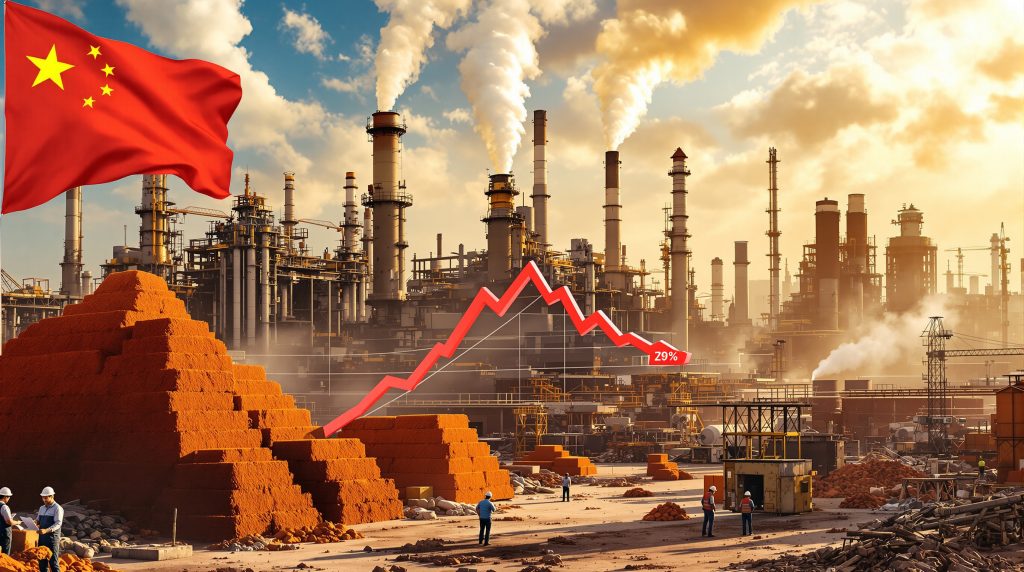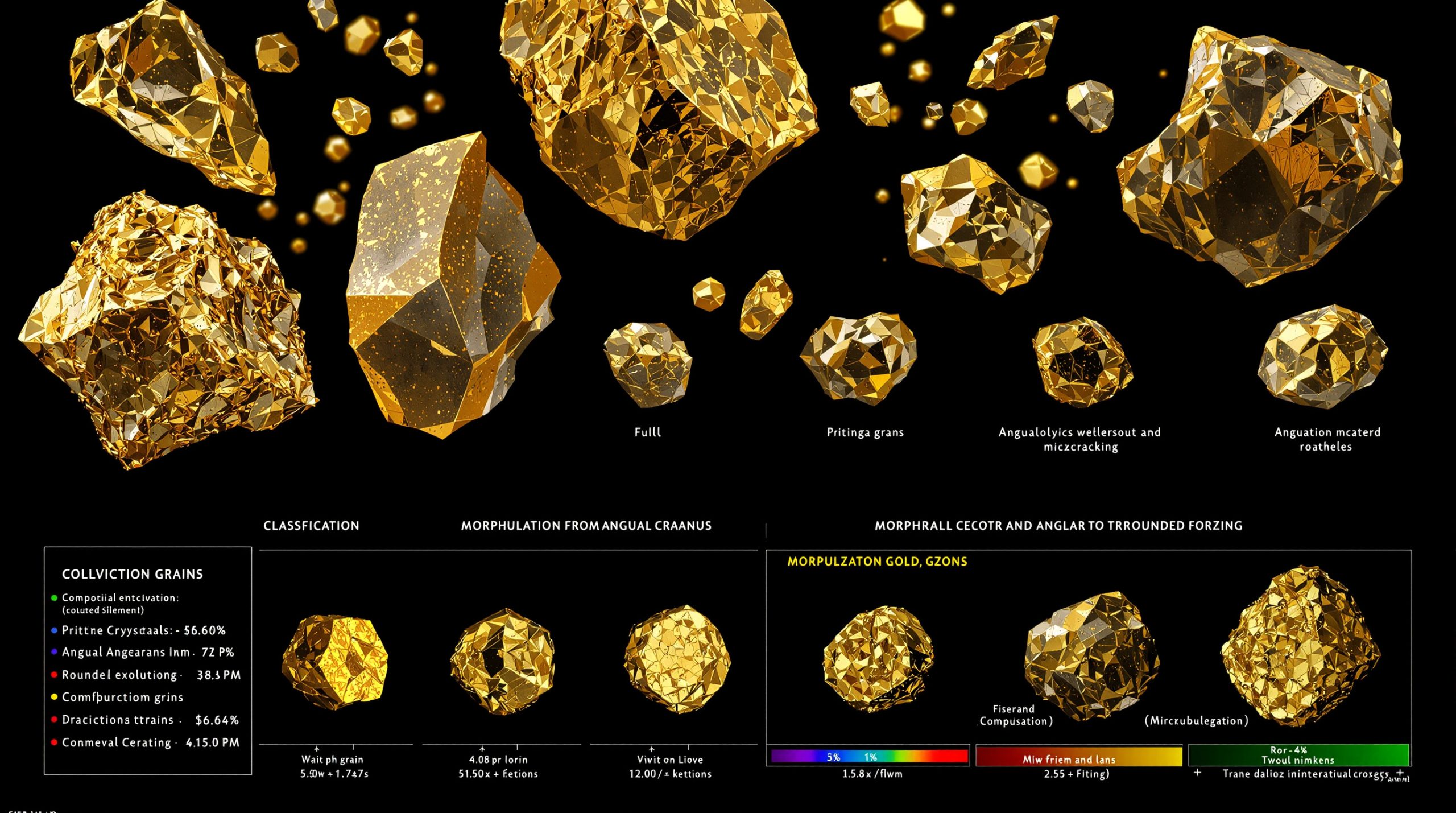Why Is the Expansion of Copper Smelting Capacity a Concern?
China's copper smelting industry is facing a significant challenge as excessive capacity growth creates what industry executives have termed "involution-style" competition. This competitive environment has companies aggressively competing for limited raw materials, resulting in unsustainably slim profit margins across the sector. The situation has become so concerning that the China Nonferrous Metals Industry Association has formally appealed to national regulators to restrict approvals for new smelting projects.
Recent industry meetings, which included representatives from major producers like Jinchuan Group Co. and Jiangxi Copper Co., highlighted the mounting pressure on existing players in the market. These discussions underscored the urgent need for intervention before the situation deteriorates further.
The rapid expansion of copper smelting capacity in China, which remains the world's largest copper consumer, has created a fundamental imbalance in the industry. This imbalance threatens not just short-term profitability but the long-term sustainability of the entire copper processing sector.
Why Is the Expansion of Copper Smelting Capacity a Concern?
The unchecked growth in smelting capacity has created a scenario where too many facilities are competing for insufficient raw materials. This has led to increasingly aggressive bidding for copper concentrate, driving processing charges down to unsustainable levels.
Industry analysis indicates that China's copper smelting capacity has expanded at a rate significantly exceeding the growth in global copper supply forecast. This misalignment has intensified competition for raw materials and squeezed processor margins to historically low levels.
Most concerning is the ripple effect throughout global supply chains. When Chinese smelters face profitability challenges, it impacts copper availability for downstream manufacturing, potentially affecting industries ranging from electronics to renewable energy infrastructure.
How Has New Capacity Affected Processing Fees and Industry Health?
Processing charges for copper concentrate, commonly known in the industry as treatment and refining charges (TCs/RCs), have plummeted to unprecedented levels. These fees have actually dropped into negative territory – a scenario that industry veterans describe as completely unprecedented in the sector's modern history.
The fall in processing fees threatens not just the profitability of individual smelters but raises serious questions about the long-term sustainability of the industry. When TCs/RCs fall below zero, it creates a perverse economic situation that industry analysts consider unsustainable.
In normal market conditions, smelters charge mining companies fees to process copper concentrate into refined copper. These fees typically fluctuate based on market dynamics but remain positive. The current negative fee environment means smelters are effectively paying miners for the privilege of processing their ore – a complete inversion of the traditional business model.
Technical Explanation of Processing Fees
When processing fees fall below zero, it fundamentally disrupts standard industry economics. Smelters essentially subsidize miners instead of charging them for processing services, reversing the typical flow of cash in copper supply chains.
This market distortion occurs because smelters face high fixed operating costs and cannot easily reduce production without incurring significant financial penalties. Many continue operating at a loss rather than shutting down, hoping for market improvement while collectively worsening the oversupply problem.
Industry analysts note that negative processing fees are particularly problematic because they remove the financial buffer smelters need to manage price volatility in the broader copper market. This increases vulnerability to market disruptions and potentially threatens the viability of even well-established operations.
Key Data Table: Recent Price Movements (Selected Commodities)
Commodity Latest Price % Change Copper $4.7833/lb -0.86% Aluminum $2576/ton -0.31% Silver Futures $45.15/ozt +2.42% Palladium $1275/ozt +3.62% Gold Futures $3768.8/ozt +0.01% Natural Gas $2.951/Btu +2.50%
What Is Causing the Ore Supply Shortfall?
Global logistics challenges have significantly strained copper ore availability, with several major disruptions exacerbating the problem. Perhaps the most significant recent disruption came from Freeport-McMoRan Inc.'s Grasberg mine in Indonesia, which halted operations following a serious safety incident.
The impact of the Grasberg disruption has been substantial, with Goldman Sachs estimating it could subtract as much as 525,000 metric tons from expected global copper supply. This represents a significant percentage of annual global production and comes at a particularly challenging time for the industry.
The ore supply squeeze has intensified the impact of excess smelting capacity in China. With insufficient raw materials available, smelters have been forced to compete even more aggressively for the limited concentrate available in the market.
What Is Causing the Ore Supply Shortfall?
The current ore shortage stems from multiple factors beyond just the Grasberg disruption. Global logistics bottlenecks have hampered the movement of copper concentrate from mining regions to processing facilities. Weather events in major copper-producing regions have also impacted production schedules.
The mining industry has experienced underinvestment in new projects over the past decade, leading to fewer new mines coming online to replace depleting operations. This structural supply issue predates the current crisis but is now being fully revealed as surging copper demand remains robust.
Looking forward, the combination of ore shortages and excessive local processing capacity places Chinese smelters in an increasingly vulnerable position. Without intervention, many analysts believe the sector will face continued margin erosion and potential consolidation through closures of less efficient operations.
How Do Government and Industry Groups Propose to Address Overcapacity?
Industry associations have suggested implementing tighter regulations on new smelter development to avoid further market saturation. These proposals include more stringent approval processes for new projects and potentially restricting expansion at existing facilities until market conditions improve.
The Chinese government is actively researching more comprehensive oversight mechanisms and policy interventions. According to industry sources, decisions on new regulatory approaches are anticipated in the near future as authorities recognize the severity of the situation.
The strategic approach mirrors efforts previously implemented in other Chinese industrial sectors such as steel and solar panel manufacturing, where unchecked expansion led to harmful price depression and unsustainable competition. Those interventions ultimately helped stabilize prices and restore healthier industry economics.
What Measures Are Being Advocated for Capacity Management?
Proposed regulatory measures include establishing minimum technical and environmental standards for new facilities that would effectively limit the number of projects that can gain approval. Some industry participants have suggested implementing regional quotas to distribute capacity more rationally.
Industry associations have also recommended instituting minimum processing fee guidelines to prevent destructive price competition. While such price floors would be difficult to enforce directly, they could serve as reference points for industry self-regulation.
Most significant proposals involve creating a formal approval process requiring new projects to demonstrate that sufficient ore supply exists to support their operations without undermining existing facilities. This would directly address the fundamental imbalance between processing capacity and raw material availability.
What Are the Wider Economic Consequences of Overcapacity in Key Chinese Industries?
Persistent overinvestment in copper smelting reflects a broader pattern that has led to diminished profitability across many of China's heavy industries. This pattern of excessive capacity expansion has contributed to deflationary pressures throughout the Chinese economy.
The copper smelting situation exists against a backdrop of broader macroeconomic challenges, including ongoing weakness in the property market, which traditionally has been a major consumer of refined copper. This combination of supply-side overexpansion and demand-side weakness creates particularly challenging conditions.
Authorities in Beijing have recognized these structural imbalances and have begun implementing multidimensional interventions targeting excess production across various industries. These efforts aim to stabilize prices, protect industrial health, and promote more sustainable economic growth.
What Are the Wider Economic Consequences of Overcapacity in Key Chinese Industries?
The economic impact extends beyond just the copper industry. Overcapacity in multiple sectors creates deflationary pressure that can suppress wage growth and consumption, potentially leading to a negative economic spiral if left unchecked.
From a trade perspective, excess capacity often leads to increased exports as producers seek overseas markets to absorb surplus production. This has historically created trade tensions with major partners like the United States and European Union, who may implement protective tariffs in response.
The environmental impact of operating too many facilities at low utilization rates is also significant. Underutilized smelters typically operate less efficiently, leading to higher emissions per ton of copper produced and undermining China's environmental goals.
What Is the Outlook for Global Copper Supply and Market Balance?
The Grasberg incident clearly demonstrates the fragility of global copper supply chains. When major mining operations experience disruptions, the effects ripple throughout the entire value chain, affecting smelters, refiners, and ultimately end-users of copper products.
Goldman Sachs projects that these supply challenges, combined with steady downstream demand growth, will likely result in a global copper supply deficit by 2025. This forecast suggests a potential rebalancing of market power that could eventually benefit smelters – if they can weather the current challenging conditions.
The projected deficit represents a significant shift from recent market dynamics and could potentially reverse the pricing pressure on processing fees if it materializes as expected. However, the transition period may prove extremely challenging for smelters currently operating with negative margins.
How Are International Supply Disruptions Influencing the Market?
Beyond the Grasberg situation, several other major copper mines globally face operational challenges. Labor disputes, environmental issues, and resource depletion at aging mines all contribute to supply uncertainty.
The geographical concentration of copper mining in regions susceptible to political instability or natural disasters creates additional supply vulnerability. Chile and Peru, which together account for approximately 40% of global copper mine production, both face ongoing political and social challenges that could affect output.
Climate change impacts also increasingly threaten copper supply chains, with extreme weather events affecting operations in key mining regions. Drought conditions in Chile, for instance, have forced some operations to invest heavily in desalination plants to secure water supplies.
How Are Processing Fees and Margins Likely to Evolve?
Unless ore supply significantly improves or smelting capacity expansion slows considerably, pricing power will likely continue shifting in favor of miners rather than processors. This power imbalance could persist until market forces or regulatory intervention brings the system back toward equilibrium.
Industry consensus suggests that restoring healthy balance will require both policy discipline from Chinese authorities and international coordination to ensure sustainable pricing. Without intervention, the market may eventually self-correct through the closure of less efficient smelters, but this process could be prolonged and economically painful.
The potential emergence of a global copper deficit by 2025, as projected by Goldman Sachs, may eventually help rebalance the relationship between miners and smelters. However, this transition period presents significant challenges for smelting operations trying to survive the current negative margin environment.
How Are Processing Fees and Margins Likely to Evolve?
Historical patterns suggest that processing fees typically move in cycles, though the current negative territory represents an extreme point. Analysis of past cycles indicates that recovery often follows periods of extreme compression, but the timing remains uncertain.
Supply-side responses from miners could potentially accelerate market rebalancing. If current conditions persist, some mining companies may choose to delay capacity expansions or temporarily reduce output from higher-cost operations, which would help address the concentrate oversupply issue.
The downstream demand outlook remains robust despite economic uncertainties. Copper's critical role in electrification, renewable energy, and electric vehicle production suggests strong long-term demand fundamentals that should eventually support healthier economics throughout the supply chain.
What Methodologies Are Used by Industry and Analysts to Assess Capacity and Risk?
Industry Capacity Monitoring
Copper smelting operators and regulatory bodies employ various monitoring techniques to assess industry capacity and utilization. Rolling audits collect facility-level production data across the sector, enabling comprehensive analysis of aggregate capacity and identifying potential imbalances.
Supply chain analytics play a crucial role in understanding the relationship between ore availability and smelter utilization. By modeling ore inflows and anticipated shipments, analysts can develop predictive insights regarding future smelter utilization rates and potential bottlenecks.
Technical efficiency assessments help identify operations most at risk during periods of market stress. These assessments evaluate factors such as energy efficiency, recovery rates, and maintenance requirements to determine which facilities might face the greatest challenges during downturns.
Risk Assessment Techniques
Macroeconomic scenario modeling provides valuable insights into potential industry risks. Analysts use statistical projections of ore disruptions – whether from accidents, geopolitical events, or labor disputes – to stress-test smelter profitability under various conditions.
Comparative benchmarking against historical averages and international peers helps identify early warning signs of industry distress. Processing fee data, when compared against long-term trends, can signal potential sustainability issues before they become critical.
Price correlation analysis examines the relationship between refined copper prices and processing fees to understand how changing market conditions might affect smelter economics. This analysis helps anticipate how margins might evolve under different copper price predictions scenarios.
Frequently Asked Questions (FAQs)
Why Are Processing Fees for Copper Smelters So Low in China?
Processing fees have reached historically low levels primarily due to the oversupply of smelting capacity relative to available copper concentrate. With too many facilities competing for limited raw materials, smelters have been forced to accept increasingly unfavorable terms to secure feedstock.
Global disruptions to copper mining operations have further constrained ore availability, intensifying competition among smelters for the limited supply. This supply-demand imbalance has pushed processing fees into negative territory – an unprecedented situation for the industry.
The rapid expansion of smelting capacity in China has outpaced growth in global mining output, creating a structural imbalance that may take significant time to resolve without regulatory intervention or market-driven consolidation.
What Actions Might the Chinese Government Take to Stabilize the Industry?
Based on previous interventions in other industrial sectors, potential government actions could include freezing new project approvals until market conditions improve. This would prevent further capacity additions while allowing demand growth to gradually absorb existing overcapacity.
Authorities might also implement stricter operational compliance requirements, potentially forcing less efficient or environmentally problematic facilities to upgrade or close. Such measures could reduce overall capacity while improving the industry's environmental performance.
In extreme scenarios, mandated production cuts similar to those previously implemented in the steel and aluminum sectors could be considered. Such measures would directly address oversupply but would face resistance from local governments concerned about economic impact and employment.
How Significant Was the Grasberg Disruption for China's Copper Smelters?
The disruption at Freeport-McMoRan's Grasberg mine represents a meaningful reduction in available feedstock for global and Chinese smelters. With Goldman Sachs estimating the loss at up to 525,000 tonnes of ore, the impact on global copper concentrate availability has been substantial.
For Chinese smelters already struggling with negative processing fees, the Grasberg disruption further intensifies competition for limited raw materials. This exacerbates margin pressure and could accelerate financial distress for less competitive operations.
The timing of the disruption is particularly challenging, occurring when the industry was already facing significant structural imbalances. This highlights the vulnerability of the current market structure to supply shocks and the need for more sustainable capacity management.
Conclusion: What Is Next for China's Copper Smelting Sector?
The copper smelting industry in China stands at a critical juncture, facing challenges from aggressive expansion, stressed supply chains, and potential regulatory interventions. The current situation with negative processing fees appears unsustainable and will likely force significant structural changes in the sector.
Achieving sustainable equilibrium will likely require decisive regulatory action to limit new capacity growth, more conservative expansion planning from industry participants, and diversified international sourcing strategies to reduce supply vulnerability. Without these adjustments, the sector faces continued financial strain.
The intersection of these factors will shape a new operational reality for major copper smelters in the coming years. While the transition may prove challenging, the fundamental importance of copper in modern economies suggests the industry will ultimately find a more sustainable balance – though potentially with fewer but stronger players than today. For investors considering copper investment strategies or exploring copper-uranium investment trends, understanding these structural challenges is essential for making informed decisions.
Further Exploration:
Readers seeking broader perspectives on global copper markets and China's strategic role can also view educational material at MINING.COM and Bloomberg's coverage of industrial trends.
Want to Spot the Next Major Mineral Discovery Before the Market?
Discover why major mineral discoveries can lead to significant market returns by exploring Discovery Alert's dedicated discoveries page, showcasing how their proprietary Discovery IQ model delivers real-time alerts on significant ASX mineral announcements, giving subscribers a crucial market advantage.




